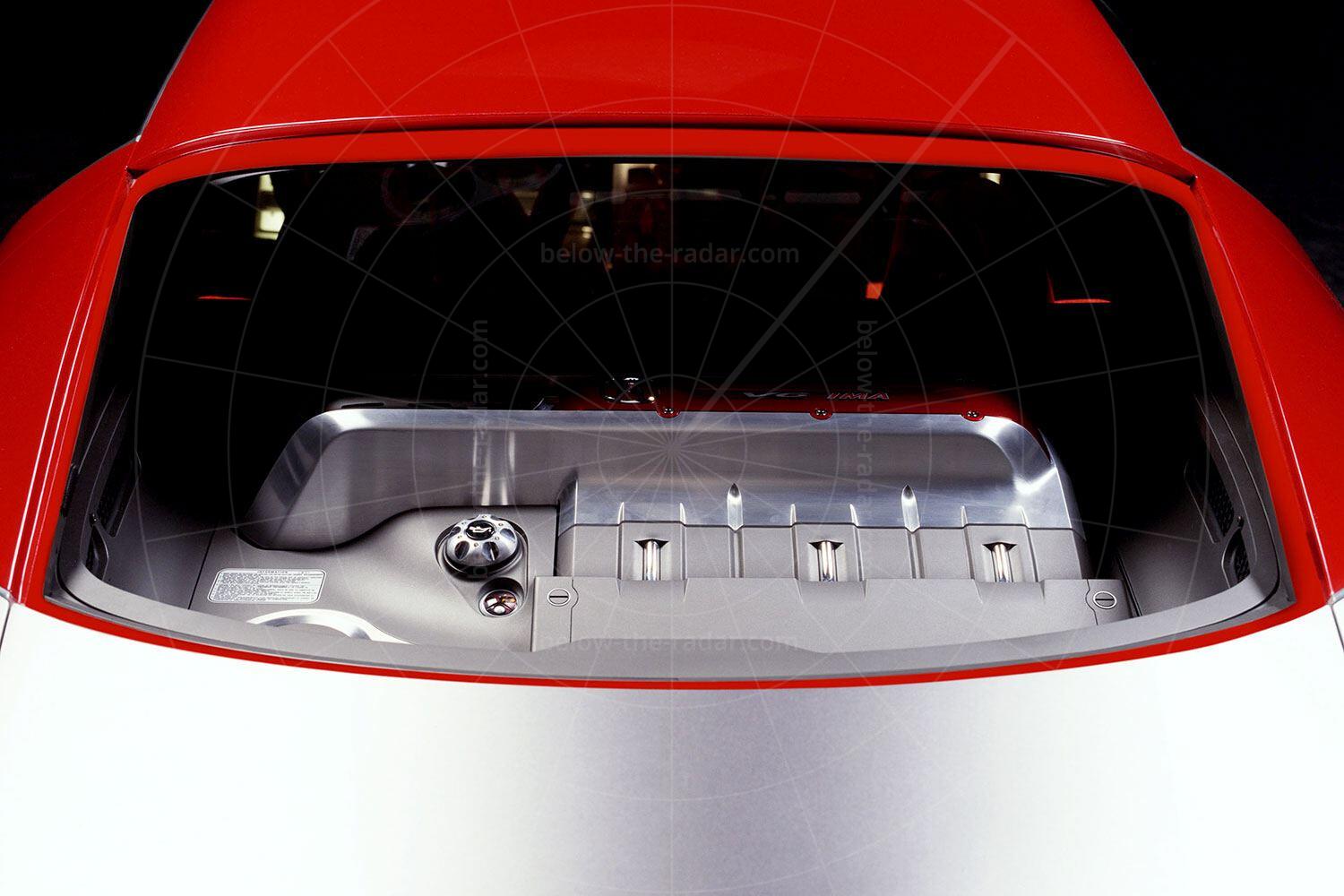How would you like a car that offers nearly 400bhp yet can still travel over 50 miles on a gallon of fuel? It’s a tempting prospect, and one that Honda offered in the Dualnote that was first shown at the 2001 Tokyo motor show. But despite the fact that the car looked very futuristic, and some of the technology that it packed also appeared to be similarly unattainable, the reality was that everything under the skin of the Dualnote was possible to put into production there and then. It was just that it would have proved to be far too expensive for the average family to afford…
Positioned in the middle of the Dualnote there was a 3.5-litre V6 petrol engine, which when combined with the three electric motors that were also fitted, was capable of developing a rather tasty 394bhp, which was channelled to all four wheels. Transmitting this power there was a six-speed clutchless manual gearbox which also incorporated a fully automatic mode.
The Dualnote was a full four seater, despite the fact that the engine sat behind the back seat passengers, which reduced the available space considerably. As was becoming increasingly popular at the time, the fact that there were four doors was masked by the design which suggested that the car was really a two-door coupé.
The use of a two-tone paint scheme was an interesting way of trying to emphasise the wedge-shaped profile of the car, especially as the red and silver-grey colours contrasted so heavily with each other. Sadly the design was rather too clumsy; there was no way the paintwork on its own could make it look any more graceful. The droopy nose with its small inset headlights presented something of a missed opportunity; for the sake of getting the proportions right it could have looked so much more attractive.
At least the overall shape of the Dualnote was appealing, and with its spoked alloy wheels it looked really quite sporty; at the front they were 18 inches in diameter while the rear items were an inch larger. Wrapped in 45-profile tyres the car also looked utterly contemporary; compared with other concepts of the time the tyres were actually quite high profile.
Inside the Dualnote there was a colour scheme which echoed that of the bodywork, and unfortunately the cabin also continued some of the clumsiness that was seen on the outside of the car. A prominent centre console ran the length of the interior and the dash was trimmed in black and silver, which was lifted by plenty of aluminium detailing. But the seats were trimmed in red, which didn’t tie in with any highlights anywhere else in the cabin.
Again, much like the exterior design, the Dualnote’s cabin was something of a missed opportunity. At least the gadget count was high to compensate, with voice activation for most of the functions. The instrument panel was designed to deliver only the necessary information when needed; divided into three optimally positioned display units, the first showed speed, engine rpm, and other basic information. The readout also notified the driver of incoming text and email messages. The centre display, at the bottom of the windscreen to minimise driver distraction, incorporated an arrow navigation display to indicate branches in the road ahead, and night vision, which used an infra-red camera to detect pedestrians. The image was then processed and displayed to the driver. The final display was the information monitor which used a multi-function display that automatically changed settings and display mode as necessary, to show email, internet, telephone and vehicle information such as the navigation screen.
In March 2002 the concept was shown at the New York auto show, as the Acura DN-X. This was exactly the same car, but because Honda had relaunched itself in the US using the Acura brand, it made sense to rebadge the concept using this identity. But sadly the fresh badges couldn't take away the fact that this oddball four-seater was still ugly from every angle.
| Vital statistics | |
|---|---|
| Debut | Tokyo, 2001 |
| Engine | Mid-mounted, 3.5-litre, V6, + three electric motors |
| Transmission | 6-speed manual/auto, four-wheel drive |
| Power | 394bhp |
- Apologies for the shockingly bad pictures but these are the official press shots that Honda/Acura released for these concepts. Thankfully press photography ain't what it used to be...




























